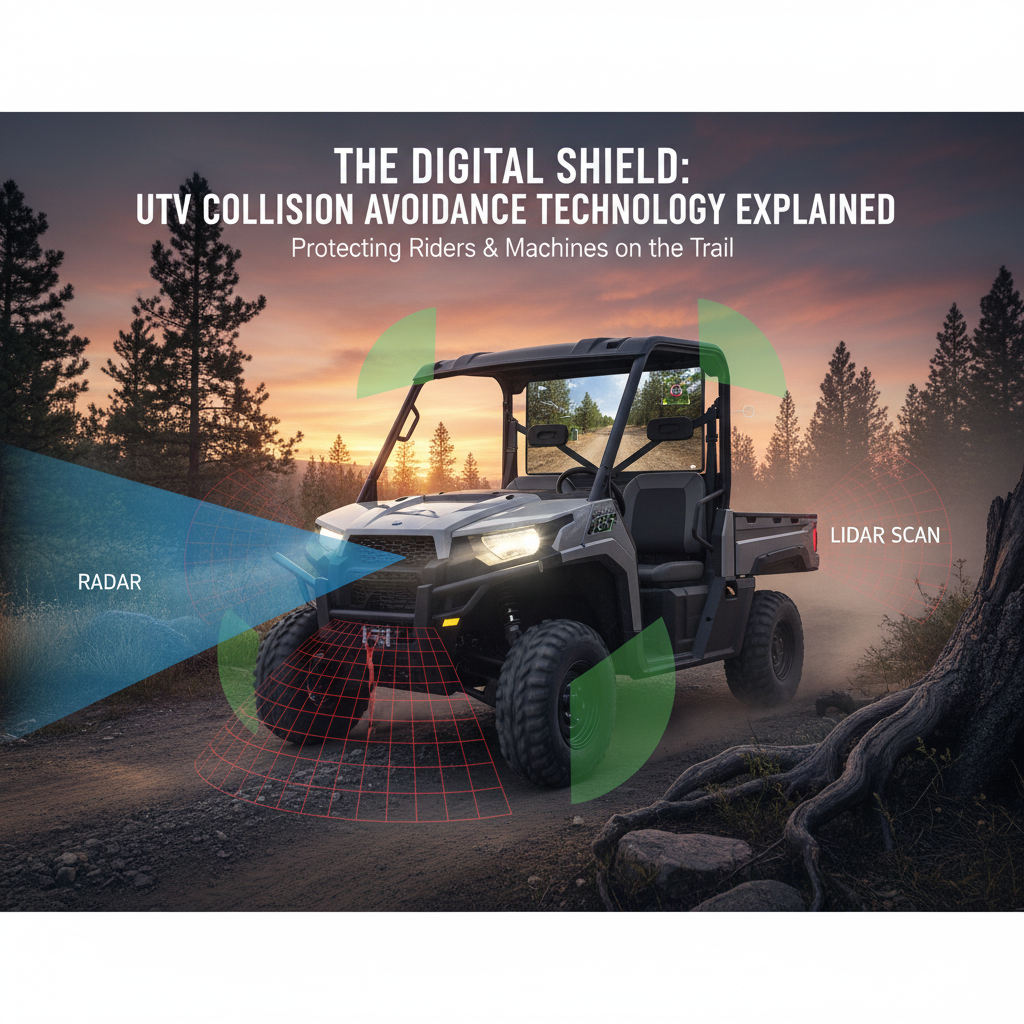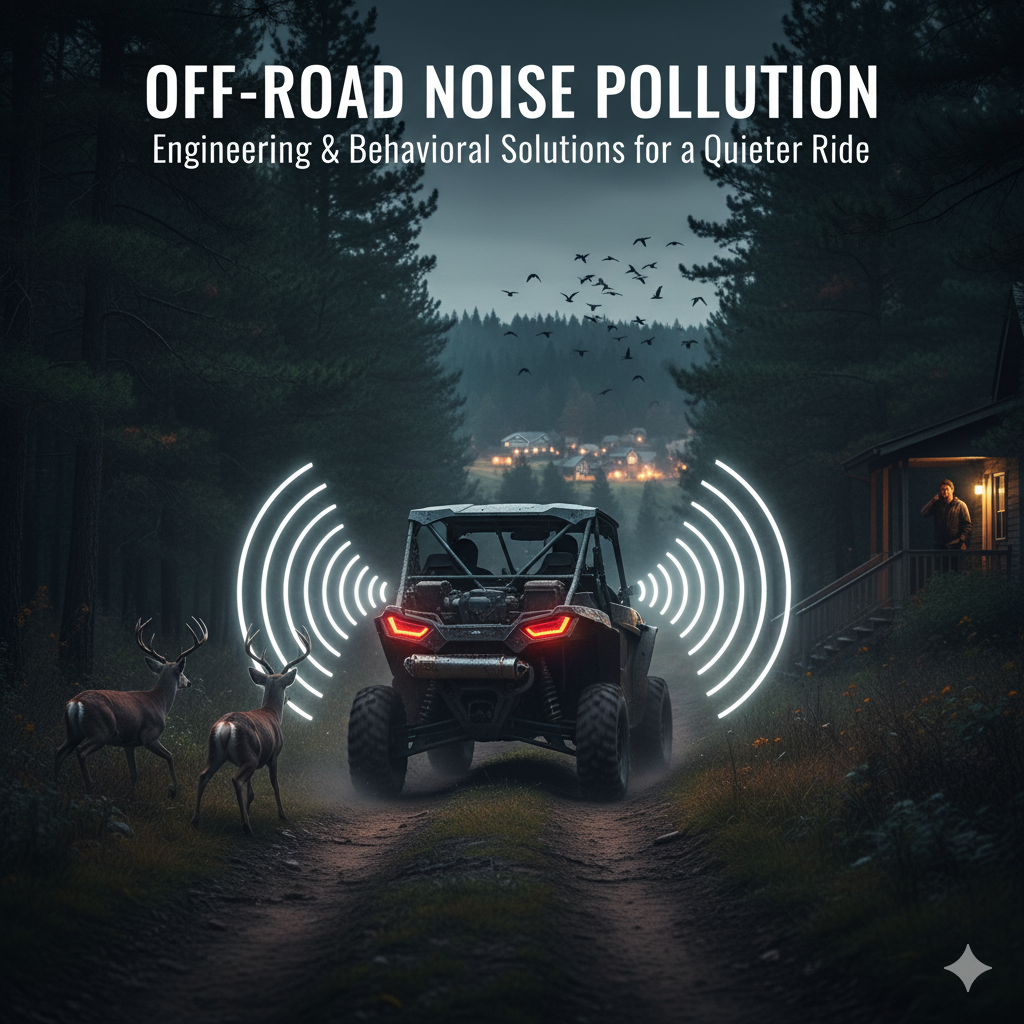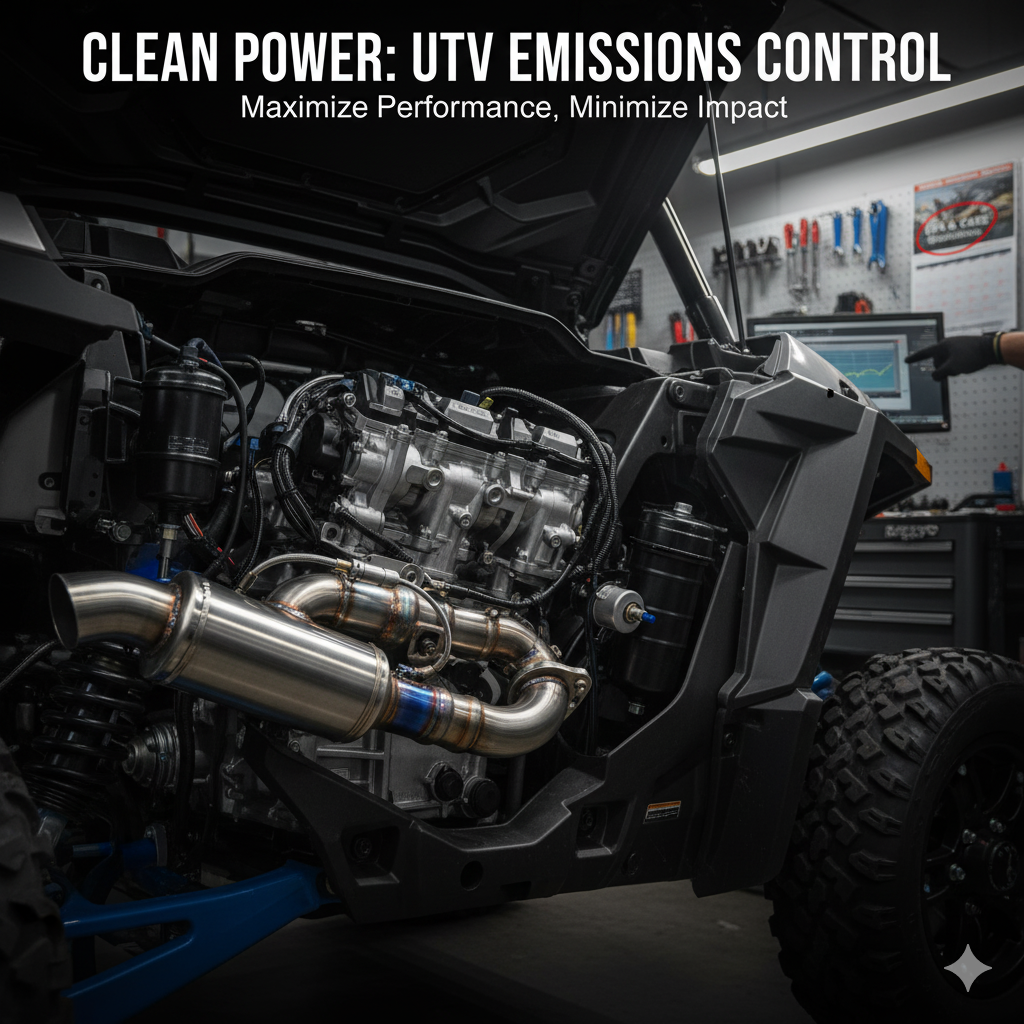The thrill of off-roading often comes from the raw, unfiltered connection between the driver, the machine, and the challenging terrain. Yet, as UTVs become faster, more powerful, and capable of tackling increasingly complex environments, the need for an intelligent safety net has grown exponentially. Enter UTV collision avoidance technology—the digital shield that is revolutionizing off-road safety.
Collision avoidance systems, once exclusive to high-end passenger vehicles, are now being adapted for the unique demands of side-by-sides.
These technologies move beyond passive safety features like seatbelts and roll cages, offering active assistance to prevent accidents before they happen.
They are the silent co-pilot, constantly scanning the environment for threats that the human eye might miss.
I’ve seen the industry shift from simple safety nets to sophisticated electronic assistance.
The integration of Advanced Driver Assistance Systems (ADAS) into UTVs is not just a trend; it’s a fundamental change in how we approach off-road risk.
This guide will break down the core technologies, discuss their application in the dirt, and show you how these systems are making the trails safer for everyone.

Phase 1: The Sensor Suite—How UTVs See the World
Collision avoidance technology relies on a suite of sensors that work together to create a real-time, 360-degree map of the UTV’s surroundings.
1. Radar Systems
Radar (Radio Detection and Ranging) is the workhorse of many collision avoidance systems, offering reliable performance in adverse weather conditions.
- How it Works: Radar sensors emit radio waves and measure the time it takes for the signal to return after bouncing off an object. This provides precise data on an object’s distance, speed, and angle.
- UTV Application: Radar is excellent for detecting fast-approaching obstacles, other vehicles, or large objects in low-visibility conditions like heavy dust, fog, or rain. Off-highway radar systems are specifically designed to be robust and reliable in these harsh environments.
2. Lidar Technology
Lidar (Light Detection and Ranging) uses pulsed laser light to measure distances, creating a highly detailed 3D map of the environment.
- How it Works: Lidar is more precise than radar and can map the contours of the terrain and small obstacles with high resolution.
- UTV Application: While less common in current aftermarket UTV systems, Lidar is a key component in autonomous off-road research, where it is used to navigate rough landscapes and detect subtle changes in elevation or small rocks.
3. Camera-Based Systems
Cameras provide the visual context that radar and lidar lack, especially when combined with machine learning.
- How it Works: High-resolution cameras capture images and video, which are then processed by AI algorithms to identify and classify objects (e.g., a person, an animal, a tree).
- UTV Application: Cameras are crucial for pedestrian detection, lane departure warnings (useful on wide trails), and providing a visual alert to the driver. They also serve as the foundation for rearview and side-view safety systems.
4. Ultrasonic and Proximity Sensors
These are the simplest and most cost-effective sensors, typically used for close-range detection.
- How it Works: Ultrasonic sensors emit sound waves and measure the echo time, similar to radar but over a much shorter range.
- UTV Application: Ideal for low-speed maneuvers, such as backing up to a trailer or navigating tight garage spaces, where they alert the driver to obstacles immediately behind or to the side of the UTV.
| Sensor Type | Detection Range | Best Application | Environmental Performance |
|---|---|---|---|
| Radar | Long | Vehicle/Large Obstacle Detection | Excellent (Dust, Fog, Rain) |
| Lidar | Medium/Short | High-Resolution Mapping, Terrain Contours | Good (Sensitive to heavy dust/mud) |
| Camera | Medium | Object Classification (People, Animals) | Poor (Low Light, Dust, Fog) |
| Ultrasonic | Short | Low-Speed Proximity Warning | Good |
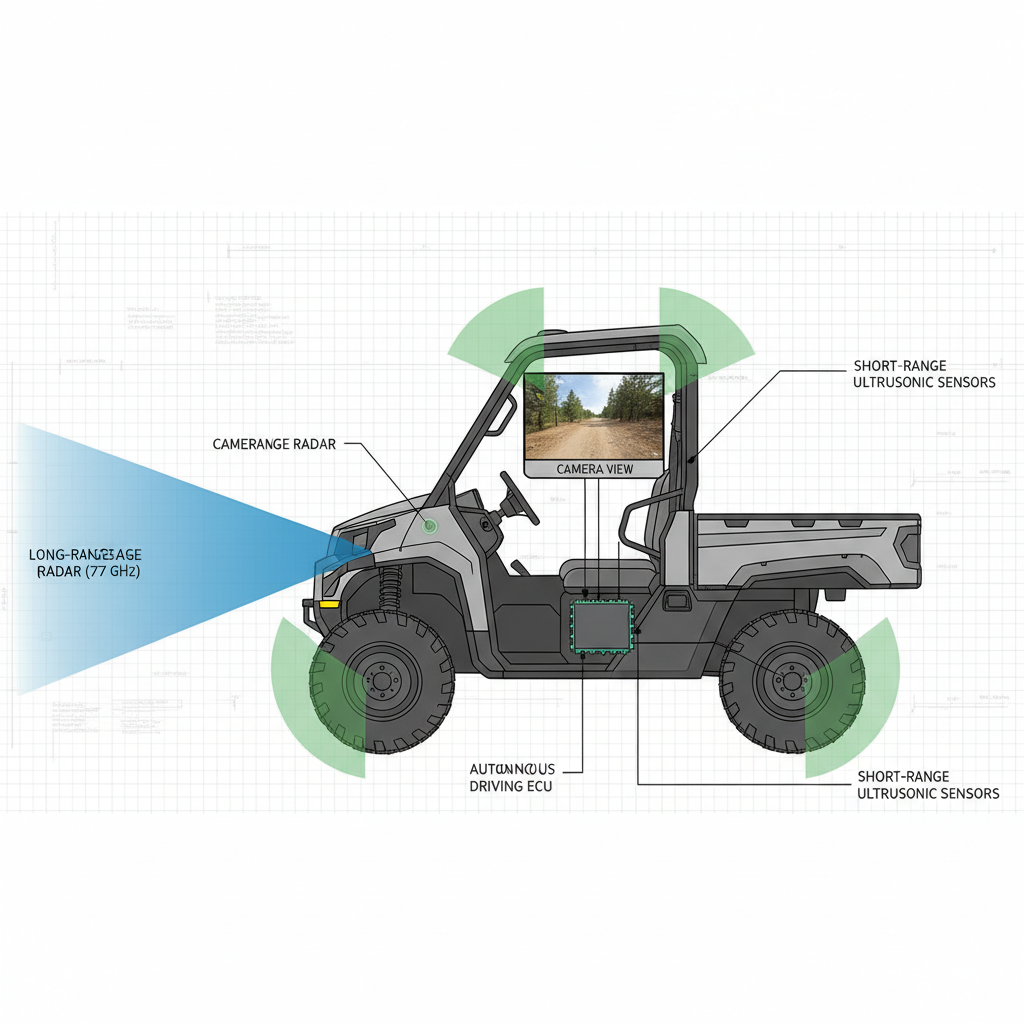
Phase 2: Advanced Driver Assistance Systems (ADAS) for Off-Road
The data collected by the sensor suite is fed into an Advanced Driver Assistance System (ADAS), which processes the information and provides the driver with warnings or, in some cases, takes corrective action.
1. Forward Collision Warning (FCW)
FCW is the most common form of UTV collision avoidance technology.
- Function: The system monitors the speed of the UTV and the distance to objects in front of it. If the system determines a collision is imminent, it provides an audible and visual warning to the driver.
- Off-Road Adaptation: Unlike road systems, off-road FCW must be tuned to handle rapid changes in terrain and the frequent presence of obstacles like rocks and trees without triggering constant false alarms.
2. Blind Spot Detection (BSD)
Blind spots are a major safety concern in UTVs, especially when maneuvering in tight spaces or changing lanes on a wide trail.
- Function: Radar or ultrasonic sensors mounted on the rear corners of the UTV detect vehicles or objects in the blind spot.
- Alerts: The system alerts the driver via a light indicator on the side mirror or A-pillar, preventing collisions during merging or passing.
3. Rear Cross-Traffic Alert (RCTA) and Backup Sensors
These systems are vital for utility and recreational UTVs that frequently back up to trailers or operate in crowded staging areas.
- Function: RCTA uses rear-facing radar to detect vehicles approaching from the side when the UTV is in reverse. Backup sensors provide an audible warning that increases in frequency as the UTV gets closer to an obstacle.
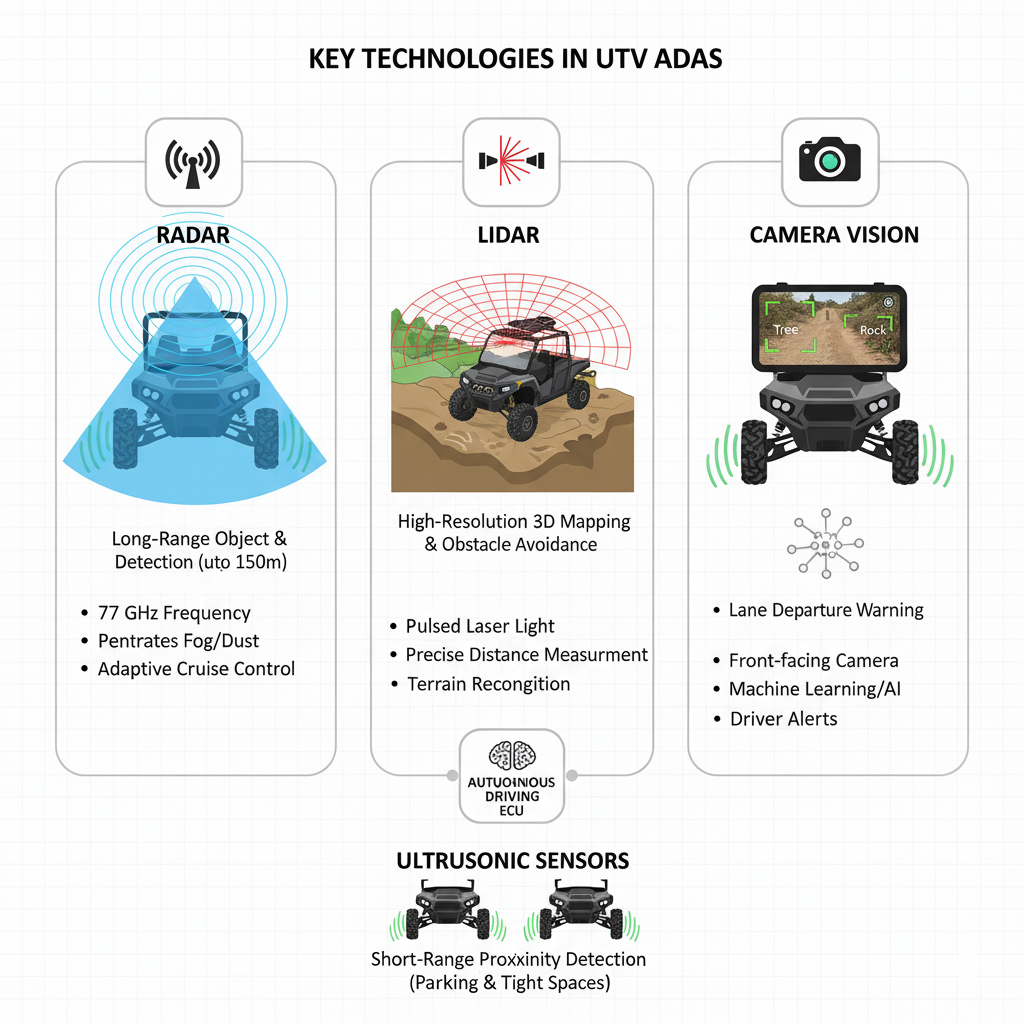
Phase 3: The Future is Autonomous—AI and Machine Learning
The next generation of UTV collision avoidance technology is being driven by Artificial Intelligence (AI) and machine learning.
1. Object Classification and Prediction
AI allows the UTV to do more than just detect an object; it allows it to understand what the object is and predict its movement.
- Enhanced Safety: Machine learning models can differentiate between a stationary rock, a moving deer, and a person, allowing the system to prioritize warnings and potential interventions based on the threat level.
- Terrain Awareness: AI can process Lidar and camera data to understand the terrain, identifying dangerous drop-offs, deep ruts, or unstable surfaces, and warning the driver before they enter a hazardous area.

2. Active Intervention (Autonomous Braking)
While full autonomy is still emerging, some advanced systems are beginning to incorporate active intervention.
- Function: If the driver fails to respond to a collision warning, the system can automatically apply the brakes to mitigate or avoid a crash.
- Off-Road Challenge: Implementing automatic braking in an off-road environment is complex, as an unexpected brake application on a steep hill or loose surface could cause a loss of control. These systems require highly sophisticated algorithms to ensure safety without compromising the driver’s control.
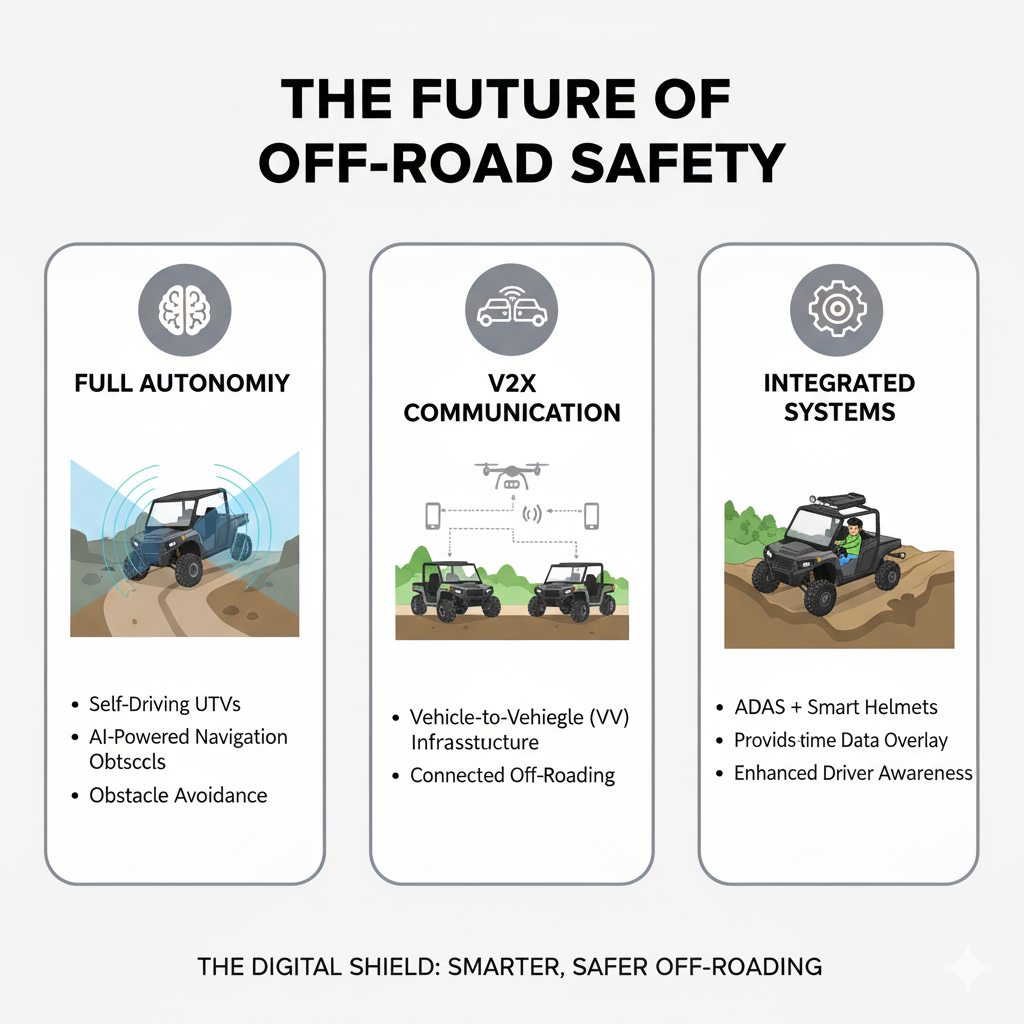
Conclusion: Safety Without Sacrificing Thrill
UTV collision avoidance technology represents the perfect marriage of high-tech safety and off-road adventure.
These systems are not designed to take the fun out of driving; they are designed to enhance safety, allowing riders to push their limits with a greater degree of confidence.
From simple proximity sensors that prevent fender-benders in the garage to sophisticated radar systems that see through dust storms, the technology is rapidly evolving.
By understanding and integrating these advanced systems, you are not just protecting your machine; you are protecting your passion for the trail.
The digital shield is up—ride smart, ride safe.
References
[1] UTV Covers – The Ultimate Guide to UTV Safety Features and Technologies
[2] ATV Trader – 10 Innovations in ATV Safety Features and Technology to Try in 2025
[3] Bosch Mobility – Radar systems for Off-highway applications
[4] Brigade Electronics – Detection Systems
[5] LinkedIn – How AI is Revolutionizing North America’s ATV and UTV Industry

